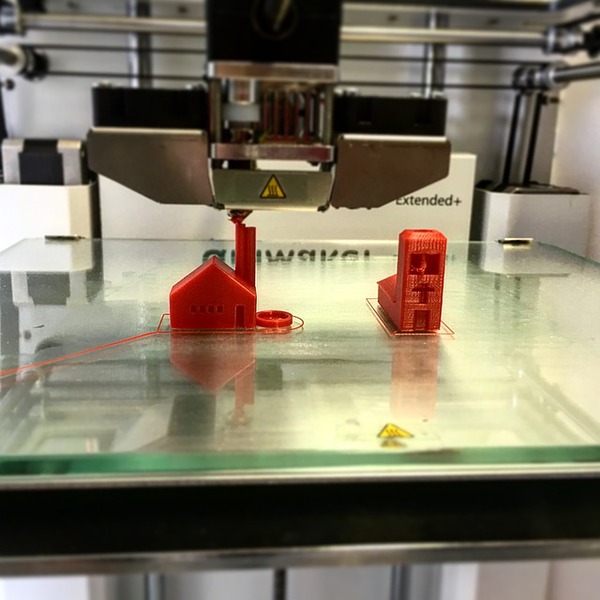The uses of 3D printing in U.S. manufacturing is increasing. Two years ago, 3D printing – which is also called “additive manufacturing” — saw its global revenues rise more than 17%. In 2017, almost half a million 3D printers were shipped. But in 2020? Shipments of a whopping 6.7 million 3D printers are forecast, according to Business News Daily. The entire industry is currently worth more than $6 billion.

The use of 3D printing is growing by leaps and bounds.
Multiple Sectors, Many Products
Of equal importance, the reach of 3D printing is growing on pace with its use. Companies engaged in sectors from automotive to aviation to technology are using 3D processes to run prototypes and create products, lessen time to market, streamline costs, increase their competitiveness and hike return on investment (ROI). Companies are experimenting with ways to use 3D printing to make large products, such as F-35 fighter jets, along with smaller components, such as automotive parts.
Many observers think that 3D printing is one of the most significant components in the remaking of the U.S. manufacturing sector, a movement that some call Industry 4.0. Industry 4.0 is the combination of 3D, the internet of things (IoT), robotics, and machine learning to create fast, flexible design and production methods.
An Increasing Number of Roles
Because of its speed and flexibility, 3D printing is used for design and prototyping. But that speed and flexibility is changing the way manufacturing is done. Right now, products with smaller manufacturing runs (up to several thousand) are done speedily and efficiently, but bigger runs tend to be done with traditional manufacturing methods.
But because of the reliability and scalability of next-generation 3D printers, most industry observers believe 3D will take over all sizes of manufacturing runs. Factories may tool up to produce a certain number per week or day.
Related Posts
3D printing is giving manufacturing a quality highly prized by business leadership and extolled in technology news – nimbleness. 3D manufacture allows one facility to produce airplane parts on one day and consumer goods on another. This opens the possibility of manufacturing firms that aren’t reliant on one industry, but can move seamlessly between multiple industries.
“It’s not going to create a lot of jobs for people working in the factories. It’s going to create some higher-level jobs in the factories, more engineering types than blue-collar workers. Of course, there will be a lot of programming jobs and design jobs for people doing new product innovation and things like that.” — Dartmouth professor Richard D’Aveni
Will 3D printing make the U.S. manufacturing sector as strong as it once was? Certainly, there is great potential for the method to strengthen U.S. manufacturing. Its cost efficiencies mean that companies can remain in the U.S. versus going overseas for cheaper processes and labor, so more “print farms,” as clusters of 3D manufacturing concerns are called, can remain in the U.S.
But as Dartmouth professor Richard D’Aveni explains in a Wharton School podcast, 3D printing is unlikely to employ the same numbers of people as twentieth-century manufacturing did at its peak. 3D printing processes are more a matter of a computer and computer-aided design following the specifications rather than having a worker follow them. Workers are utilized to operate the IoT and computer processes, but not at the same number as the traditional factory floor.
What will 3D printing mean for manufacturing jobs? D’Aveni states: “It’s not going to create a lot of jobs for people working in the factories. It’s going to create some higher-level jobs in the factories, more engineering types than blue-collar workers. Of course, there will be a lot of programming jobs and design jobs for people doing new product innovation and things like that.”
“That’s probably going to result in a lower number of people working in the factories. Having said that, we should be cognizant of the fact that the United States has so few people actually making stuff in the factory. Lots of people work for manufacturing firms, but they’re doing marketing and distribution and accounting. The people in the U.S. aren’t really going to be affected. The people who are going to be affected are in places like Asia, where they have lots of employees and lots of assembly going on. That’s going to disappear. We’ll be able to make an awful lot more here and save the transportation costs. This is going to mean that the balance of trade and the balance of funds isn’t going to flow to Asia like it used to.”
Bottom line: While 3D printing has the capacity to bolster U.S. manufacturing, the processes ensure that it will have a smaller footprint even if it enlarges the sector.
